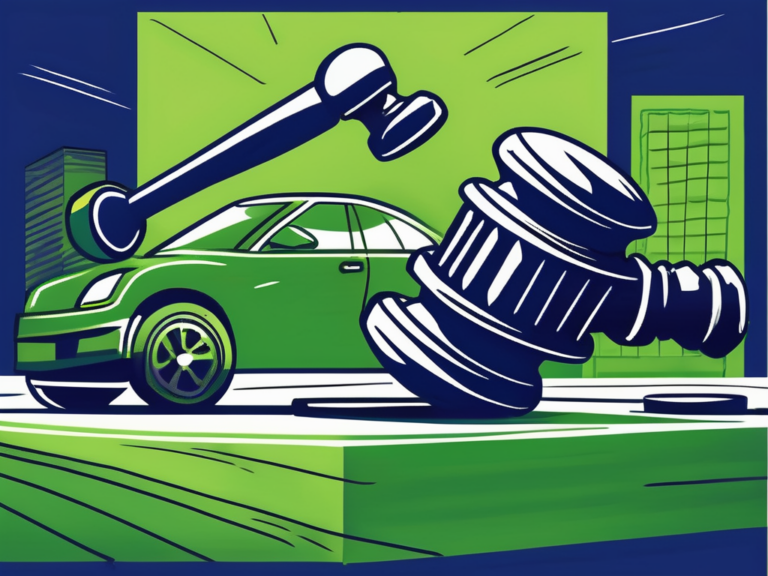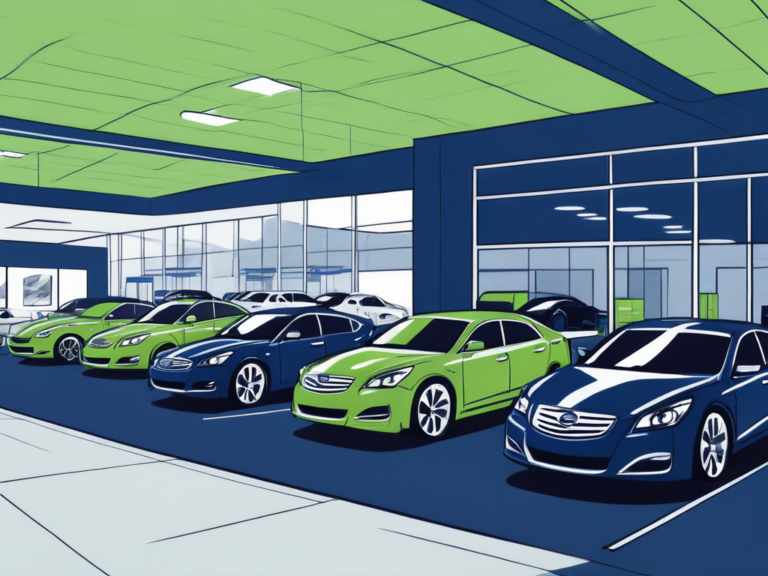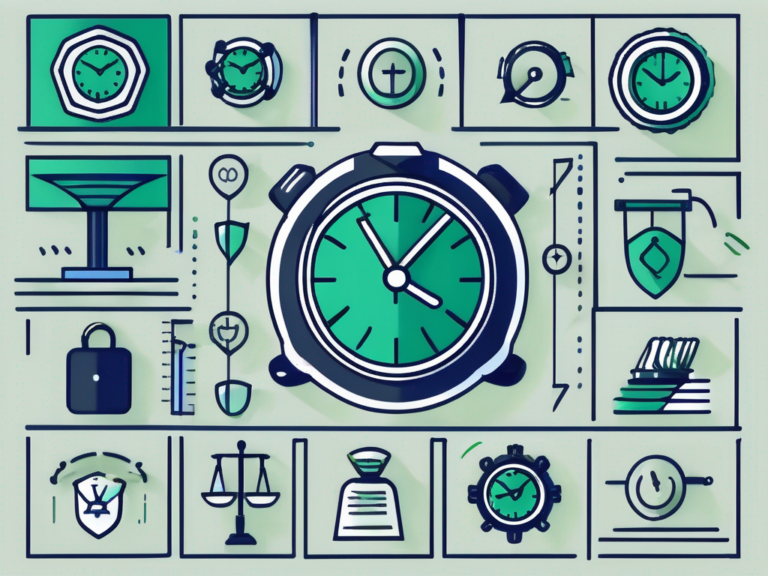Talk to Sales: (401) 200-6026

In the highly competitive world of automotive dealerships, finding ways to increase profitability is essential for long-term success. Dealerships face numerous challenges, from fluctuating market conditions to rising costs and changing customer expectations. However, by understanding the dynamics of dealer profitability and implementing effective strategies, dealers can not only survive but thrive in this challenging industry.
Understanding Dealer Profitability
Dealer profitability refers to the ability of a dealership to generate profits from its operations. It is the measure of financial success that determines the viability of a dealership. Dealer profitability is crucial because it drives growth, attracts investors, and ensures sustainability. Without a focus on profitability, a dealership cannot survive in today’s competitive landscape.
The Importance of Dealer Profitability
Dealer profitability is the lifeblood of any dealership. It enables dealers to invest in top-quality inventory, hire and retain skilled staff, provide excellent customer service, and expand their business. Profitability allows dealerships to weather economic downturns and invest in new technologies and marketing efforts.
Moreover, dealer profitability plays a significant role in the overall economy. Dealerships contribute to job creation and economic growth by providing employment opportunities and generating tax revenue. When dealerships are profitable, they can contribute more to the local community and stimulate economic development.
Key Factors Affecting Dealer Profitability
Several factors directly affect a dealership’s profitability:
1. Vehicle Sales: The number of vehicles sold directly impacts the dealership’s revenue. Increasing sales is crucial for boosting profitability. Dealers must focus on effective sales strategies and maintain a well-trained sales team.
In addition to increasing sales volume, dealerships can explore various avenues to enhance vehicle sales. This can include implementing targeted marketing campaigns, leveraging digital platforms, and offering attractive financing options to customers. By adopting a customer-centric approach, dealerships can build trust and loyalty, leading to higher sales and improved profitability.
2. Profit Margins: Higher profit margins lead to increased profitability. Dealerships should negotiate favorable terms with suppliers and manufacturers to maximize margins.
One way dealerships can improve profit margins is by diversifying their revenue streams. In addition to vehicle sales, dealerships can offer value-added services such as maintenance packages, extended warranties, and financing options. These additional revenue streams can contribute to higher profit margins and overall profitability.
3. Inventory Management: Efficient inventory management is essential to reduce carrying costs and avoid overstocking or understocking. Implementing technology-driven solutions can help optimize inventory levels and improve profitability.
Dealerships can leverage advanced inventory management systems that utilize data analytics and forecasting algorithms. These systems can provide real-time insights into customer demand, allowing dealerships to stock the right vehicles at the right time. By minimizing inventory carrying costs and avoiding stockouts, dealerships can enhance profitability.
4. Customer Satisfaction: Satisfied customers are more likely to become loyal patrons and provide positive referrals. Building strong customer relationships is a key driver of profitability.
Dealerships can prioritize customer satisfaction by providing exceptional service throughout the entire customer journey. This includes personalized interactions, transparent pricing, and efficient after-sales support. By going above and beyond customer expectations, dealerships can foster long-term relationships, leading to repeat business and increased profitability.
5. Operational Costs: Dealerships must relentlessly control costs to maintain profitability. Analyzing operational expenses and identifying areas for improvement is crucial.
Dealerships can implement cost-saving measures such as energy-efficient lighting, optimized staffing levels, and streamlined administrative processes. Additionally, exploring partnerships with suppliers and service providers can lead to cost reductions through bulk purchasing or shared resources. By continuously evaluating and optimizing operational costs, dealerships can improve profitability.
By understanding and effectively managing these key factors, dealerships can enhance their profitability, ensuring long-term success in the competitive automotive industry.
Sell cars on the lot faster with AutoRaptor
Know if we’re the right fit within 10 minutes
Strategies to Boost Sales
Increasing sales is a fundamental strategy for enhancing dealer profitability. In order to achieve this, there are several key strategies that dealerships can implement to effectively boost their sales and drive revenue.
Enhancing Product Knowledge
Sales teams with in-depth product knowledge can effectively communicate the value of different models and tailor their sales pitch to individual customers. It is crucial for dealerships to provide comprehensive training programs and resources to enable sales staff to become experts on the vehicles they sell.
By equipping sales teams with extensive knowledge about the features, benefits, and specifications of the vehicles, they can confidently answer customers’ questions and address any concerns. This expertise also allows them to recommend the right vehicle to meet each customer’s unique needs and preferences.
Furthermore, having a deep understanding of the products they sell enables sales teams to highlight the key differentiators of their vehicles compared to competitors. This knowledge empowers them to effectively communicate the value proposition of their offerings, ultimately increasing the likelihood of closing a sale.
Implementing Effective Sales Techniques
Equipping your sales team with strong selling techniques is essential for maximizing sales opportunities. The ability to build rapport with customers, understand their needs, and address their concerns is crucial in the sales process.
Dealerships should implement a structured sales process that guides the sales team through every step, from the initial greeting to the final negotiation. This ensures consistency and professionalism in the sales approach, while also providing a framework for sales representatives to follow.
Continuous training and coaching are vital in refining sales techniques and improving sales conversions. By regularly providing feedback, conducting role-playing exercises, and sharing best practices, sales teams can enhance their skills and become more effective in closing deals.
It is also important to keep up with the latest trends and developments in the automotive industry. By staying informed about new technologies, safety features, and industry advancements, sales teams can effectively communicate the benefits of the latest models to customers, further increasing their chances of making a sale.
Utilizing Upselling and Cross-Selling
Upselling and cross-selling techniques can significantly increase the average transaction value and boost profitability for dealerships. Training sales staff to identify opportunities to upsell accessories, extended warranties, or service packages can have a significant impact on the bottom line.
By highlighting the benefits and value of additional products or services, sales teams can effectively persuade customers to make additional purchases. For example, offering customers the option to add on accessories such as roof racks, upgraded sound systems, or navigation systems can enhance the overall driving experience and add value to their purchase.
In addition to upselling, cross-selling can also be a powerful strategy. By recommending additional products or services that complement the customer’s purchase, dealerships can increase revenue. For instance, suggesting a service package that includes regular maintenance and inspections can help customers keep their vehicles in optimal condition, while also generating additional revenue for the dealership.
It is important to approach upselling and cross-selling techniques with a customer-centric mindset. By focusing on providing value and meeting the customer’s needs, dealerships can create a positive buying experience and foster long-term customer loyalty.
By implementing these strategies, dealerships can enhance their sales performance, drive revenue growth, and ultimately achieve greater profitability.
Sell cars on the lot faster with AutoRaptor
Know if we’re the right fit within 10 minutes
Optimizing Inventory Management
Efficient inventory management plays a vital role in maximizing dealer profitability.
The Role of Inventory in Dealer Profitability
Inventory is a significant capital investment and directly impacts a dealership’s profitability. Balancing supply and demand is crucial to increase inventory turnover and reduce carrying costs. By carefully analyzing market trends and customer preferences, dealerships can optimize inventory levels and ensure an adequate supply of vehicles that sell quickly.
Techniques for Efficient Inventory Management
Implement inventory management systems that provide real-time data on vehicle sales, aging inventory, and market demand. This information enables dealerships to make informed decisions about inventory purchases and allocations. By leveraging technology, dealerships can reduce carrying costs, avoid inventory obsolescence, and increase overall profitability.
Improving Customer Relationships
Building strong customer relationships is crucial for long-term dealer profitability.
The Impact of Customer Satisfaction on Profitability
Satisfied customers are more likely to become repeat buyers and refer others to the dealership. A positive customer experience not only boosts sales but also improves customer retention and loyalty, leading to increased profitability.
Strategies for Building Strong Customer Relationships
Deliver exceptional customer service at every touchpoint. Train your staff to provide personalized attention, actively listen to customer needs, and promptly address any concerns. Regularly seek customer feedback and implement improvements based on their suggestions. Additionally, establish loyalty programs and incentives to reward loyal customers and encourage repeat business.
Leveraging Technology for Profitability
Technology plays a critical role in improving dealership profitability.
The Role of Digital Tools in Dealership Operations
Embrace digital tools and platforms to streamline operations and enhance efficiency. Use customer relationship management (CRM) systems to track and manage customer interactions. Implement data analytics tools to gain insights into customer behavior and preferences. Utilize online marketing channels, such as social media and search engine advertising, to reach a broader audience and generate leads.
How Technology Can Improve Profit Margins
Technology solutions, such as pricing optimization software, can help dealerships set competitive prices that maximize profit margins. Automated inventory management systems can reduce manual errors and optimize stock levels. Embracing technology-driven efficiency can lower costs and boost profitability in the long run.
By understanding the dynamics of dealer profitability and implementing the strategies outlined above, dealerships can position themselves for success in a competitive marketplace. Increasing sales, optimizing inventory management, improving customer relationships, and leveraging technology are all essential components of a comprehensive profitability strategy. By focusing on these areas, dealers can drive growth, profitability, and long-term success.
Want to improve your sales and move cars off the lot faster? Book a test drive with AutoRaptor to see how our simple dealership CRM software can help you close more deals effectively.
Subscribe to our Newsletter
Resources to help your dealership convert more leads into sales, retain more customers, and market inventory smarter, straight to your inbox every Sunday.




